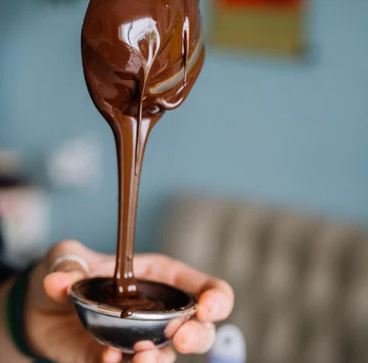
Indulge in Self-Care: How to Make a Nourishing Chocolate Face Mask
When it comes to skincare, nature has provided us with an abundance of ingredients that can do wonders for our skin. One such delightful ingredient is chocolate. Not only does chocolate satisfy our sweet tooth, but it also offers numerous benefits for our skin. Packed with antioxidants and other beneficial compounds, a chocolate face mask can help nourish, moisturize, and rejuvenate your skin. In this article, we will guide you through the process of making a luxurious and nourishing chocolate face mask that you can indulge in from the comfort of your home.
Benefits of Chocolate for the Skin:
Before diving into the recipe, let’s explore the benefits of chocolate for your skin. Chocolate, particularly dark chocolate with a high percentage of cocoa, contains powerful antioxidants known as flavonoids. These antioxidants help protect the skin from free radicals, which can contribute to premature aging, fine lines, and wrinkles.
Additionally, chocolate is rich in minerals like iron, calcium, and magnesium, which promote healthy skin cell regeneration. It also contains vitamins A, B1, C, D, and E, which help to moisturize, nourish, and improve the overall appearance of your skin. Moreover, the natural caffeine content in chocolate can help reduce puffiness and inflammation, giving your skin a refreshed and rejuvenated look.
Ingredients:
To create your homemade chocolate face mask, you will need the following ingredients:
– 2 tablespoons of unsweetened cocoa powder
– 1 tablespoon of honey
– 1 tablespoon of plain yogurt
– 1 tablespoon of finely ground oats (optional)
– A few drops of essential oil (optional)
Step-by-Step Instructions:
1. Prepare your workspace: Before you begin, ensure your face is clean and free from any makeup or dirt. Tie your hair back and wear a headband or hair clip to prevent the mask from getting into your hair.
2. Mixing the ingredients: In a bowl, combine the unsweetened cocoa powder, honey, plain yogurt, and finely ground oats (if using). The cocoa powder provides antioxidants, honey acts as a natural moisturizer, yogurt helps exfoliate and brighten the skin, and oats offer gentle exfoliation and soothing properties.
3. Optional: Add a few drops of your favorite essential oil to the mixture. Lavender, tea tree, or rose essential oils are excellent choices, as they provide additional benefits for the skin and add a pleasant aroma to the mask.
4. Mixing to a smooth consistency: Stir the ingredients thoroughly until you achieve a smooth and consistent paste. If the mixture is too thick, you can add a small amount of water to thin it out slightly.
5. Patch test: Before applying the mask to your entire face, it is advisable to perform a patch test on a small area of your skin, such as the inside of your wrist or elbow. Wait for a few minutes to ensure that you don’t experience any adverse reactions or allergies to the ingredients.
6. Applying the mask: Using clean fingers or a brush, apply an even layer of the chocolate mask to your face, avoiding the delicate areas around your eyes and mouth. Gently massage the mask into your skin in circular motions, allowing the natural exfoliants to slough off dead skin cells.
7. Relax and rejuvenate: Once the mask is applied, find a comfortable place to relax and leave the mask on for approximately 15-20 minutes. Take this opportunity to unwind, close your eyes, and let the mask work its magic.
8. Removing the mask: After the recommended time has passed, rinse off the mask with lukewarm water. Gently massage your face in a circular motion while rinsing to maximize the exfoliating.
Here are a few scientific studies and reputable sources that discuss the potential effects of chocolate on skin health:
1. Heinrich U, Neukam K, Tronnier H, et al. Long-term ingestion of high flavanol cocoa provides photoprotection against UV-induced erythema and improves skin condition in women. Journal of Nutrition. 2006;136(6):1565-1569. doi:10.1093/jn/136.6.1565
This study examined the effects of long-term ingestion of high-flavanol cocoa on UV-induced erythema (skin redness) and overall skin condition in women, suggesting potential photoprotective effects.
2. Williams S, Tamburic S, Lally C. Eating chocolate can significantly protect the skin from UV light. Journal of Cosmetic Dermatology. 2009;8(3):169-173. doi:10.1111/j.1473-2165.2009.00448.x
The study investigated the effects of consuming high-flavanol cocoa on skin response to UV light exposure, showing a potential protective effect against UV-induced skin damage.
3. Patel RV, Mistry BM, Shinde SK, Syed R, Singh V, Shin HS. Therapeutic potential of natural skin whitening agents. International Journal of Molecular Sciences. 2017;18(11):2448. doi:10.3390/ijms18112448
This review article discusses natural skin whitening agents, including cocoa, and their potential role in reducing hyperpigmentation and improving skin tone.
Please note that these studies are provided as examples and may not directly address the specific formulation or application of a chocolate face mask. It’s always important to conduct thorough research and consult with dermatologists or skin care professionals for personalized advice.